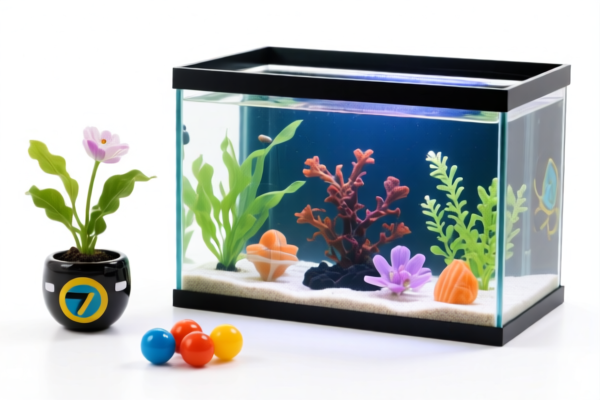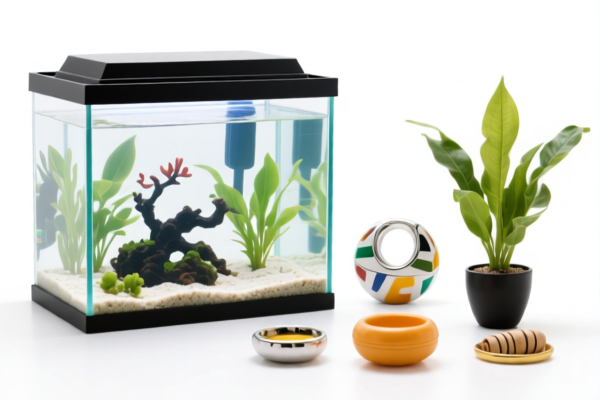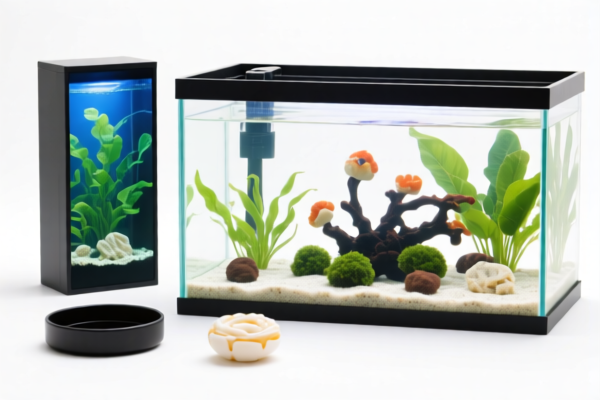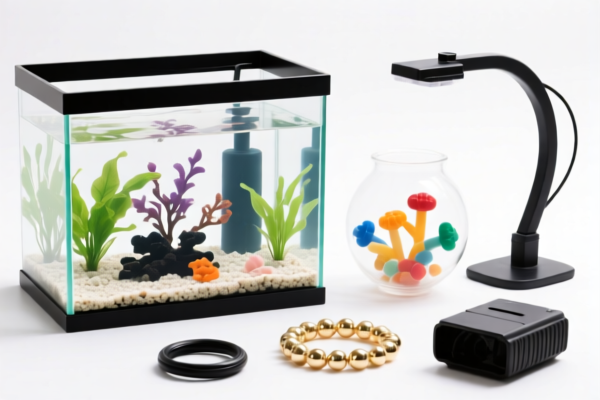| HS Code | Official Doc | Tariff Rate | Origin | Destination | Effective Date |
|---|---|---|---|---|---|
| 9603500000 | Doc | 37.5% | CN | US | 2025-05-12 |
| 9603302000 | Doc | 40.1% | CN | US | 2025-05-12 |
| 9620003090 | Doc | The rate applicable to the article of which it is an accessory+30.0% | CN | US | 2025-05-12 |
| 9620005000 | Doc | 60.3% | CN | US | 2025-05-12 |




Aquarium Filter Accessories
Aquarium filter accessories are components used to enhance, customize, or maintain aquarium filtration systems. These systems are crucial for establishing a healthy aquatic environment by removing waste, clarifying water, and providing biological support. Accessories cater to a diverse range of filter types and aquarium needs.
Materials
Accessories are constructed from various materials, each with specific properties:
- Plastic: Commonly polypropylene or acrylic, offering durability, chemical resistance, and affordability. Used for filter media housings, intake tubes, and spray bars.
- Foam: Porous polyurethane foam used as mechanical filtration media to trap large particles.
- Ceramic: Provides a large surface area for beneficial bacteria colonization, essential for biological filtration. Often in the form of rings, balls, or tubes.
- Activated Carbon: Removes dissolved organic compounds, odors, and discoloration. Available in loose form or pre-packaged bags.
- Bio-balls/Bio-stones: Plastic or ceramic structures designed to maximize surface area for nitrifying bacteria.
- Glass: Used in some specialized accessories like intake/outflow tubes or reactor bodies.
- Metal (Stainless Steel): Used for some heater housings or specialized components requiring strength and corrosion resistance.
Purpose & Function
Accessories serve multiple functions within an aquarium filtration system:
- Mechanical Filtration: Removing particulate matter (uneaten food, fish waste, debris) to improve water clarity.
- Biological Filtration: Providing a surface for nitrifying bacteria to convert harmful ammonia and nitrites into less toxic nitrates.
- Chemical Filtration: Removing dissolved pollutants, odors, and discoloration through adsorption or chemical reactions.
- Water Polishing: Refining water clarity and removing fine particles.
- Flow Control: Adjusting water flow rates for optimal filtration and oxygenation.
- Media Containment: Housing filter media for efficient filtration.
Usage Scenarios
Accessories are used in a variety of aquarium setups:
- Freshwater Aquariums: Common accessories include foam sponges, ceramic rings, activated carbon, and undergravel filter plates.
- Saltwater Aquariums: Require specialized accessories like protein skimmers, phosphate removers, and specialized bio-media.
- Planted Aquariums: May utilize accessories like pre-filters to prevent media from being sucked into the filter, and specialized media for nutrient control.
- Reef Aquariums: Demand high-quality accessories for maintaining stable water parameters and supporting coral growth.
- Pond Filtration: Larger-scale accessories like filter brushes, UV clarifiers, and bio-falls are employed.
Common Types
- Filter Sponges: Mechanical filtration, trapping large debris. Different pore sizes available for varying levels of filtration.
- Ceramic Rings/Bio-balls: Biological filtration, providing surface area for bacteria.
- Activated Carbon: Chemical filtration, removing odors and impurities.
- Filter Wool/Pads: Mechanical pre-filtration, removing fine particles.
- Protein Skimmers: (Saltwater) Remove organic waste before it breaks down, improving water quality.
- Filter Bags: Contain loose media, preventing it from entering the filter pump.
- Intake Sponges/Pre-filters: Protect the intake tube from debris and small fish.
- Spray Bars: Distribute water flow evenly throughout the aquarium.
- UV Clarifiers: Use ultraviolet light to kill algae and bacteria.
- Filter Reactors: Contain specialized media (phosphate removers, nitrate removers) for targeted filtration.
- Nozzle/Outflow Adapters: Adjust water flow direction and intensity.
- Hose Connectors/Clamps: Secure tubing connections.
Aquarium filter accessories fall under components used with machines or appliances, specifically those for maintaining aquatic environments. Based on the provided information, the following HS codes are relevant:
-
9603500000: This HS code covers “Other brushes constituting parts of machines, appliances or vehicles”. While primarily referencing brushes, it’s applicable if the accessories include brush components used within the filter system for cleaning or mechanical filtration. The base tariff is 0.0%, with an additional tariff of 7.5%. Post April 2, 2025, the additional tariff increases to 30.0%, resulting in a total tariff of 37.5%.
-
9603302000: This HS code encompasses “Brooms, brushes (including brushes constituting parts of machines, appliances or vehicles), hand-operated mechanical floor sweepers, not motorized, mops and feather dusters; prepared knots and tufts for broom or brush making; paint pads and rollers; squeegees (other than roller squeegees): Artists' brushes, writing brushes and similar brushes for the application of cosmetics: Valued not over 5¢ each”. If the accessories include brushes valued at or below 5¢ each, this code applies. The base tariff is 2.6%, with an additional tariff of 7.5%. Post April 2, 2025, the additional tariff increases to 30.0%, resulting in a total tariff of 40.1%.
It is important to note that the applicable tariff will depend on the specific composition and function of the aquarium filter accessories. If the accessories are made of plastics, HS code 9620005000 may also be relevant.
Customer Reviews
No reviews yet.